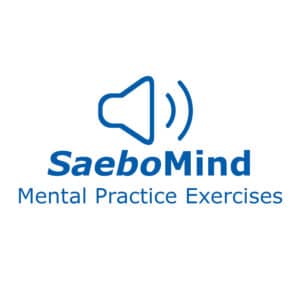Mental Practice for Stroke Recovery: Using the Mind to Reclaim Movement
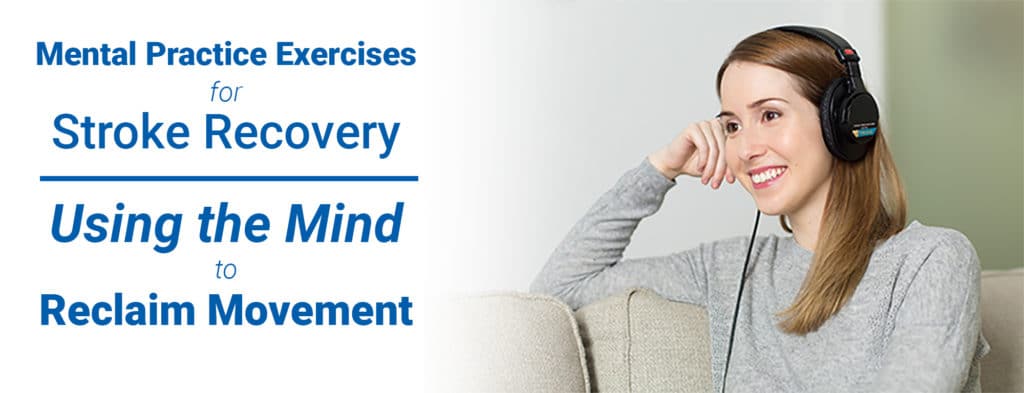
Recovering from a stroke takes hard work, dedication and...imagination? While it might seem like a far-fetched statement, using only the mind to reclaim movement can be a reality for many stroke survivors. Now, more than ever, modern medicine and rehabilitation appreciate the brain’s incredible resilience to trauma. Through a process described as "neuroplasticity," the brain’s internal structure can transform in response to experiences, practice, and learning. When provided the right challenges and appropriate tools, thousands of survivors stand a good chance of recovering from trauma to their brain (e.g., stroke, motor vehicle accident). This article highlights a potent and scientifically proven treatment called mental practice. Regular use of mental practice woven into an existing therapy routine is the leading recommendation for neurological recovery. Learn more about the brain’s plastic mechanisms, what happens during the rehearsal of movement in the mind, and how to perform mental practice using newly released SaeboMind Mental Practice Exercises.
What is Mental Practice?
Mental practice (MP) is a training approach in which an individual repetitively rehearses a physical skill using only their mind. All movement, sensation, and scenery have the potential to be mentally practiced. Like common strategies known as "visualization" and "imagery," mental practice triggers the brain’s motor, sensory, and perception centers just like when performing a physical task. This has been observed from a sensitive brain scan called functional magnetic resonance imaging (fMRI). Since brain activity and blood flow are coupled, this scan shows the increased blood flow to areas of the brain. In fact, there is level 1a evidence (the highest level possible) that MP is useful for improving upper extremity motor function (Teasall, 2016). So, does MP really work?
The Link Between the Mind and Movement
Memorize this phrase and repeat it often: Mind drives movement. These three words explain that biological changes are happening in the brain during and after the mental practice session. Those changes help plan and carry out future movement. The brain has a unique ability to rewire new neural pathways around damaged areas. Research theorizes two things with the use of MP: (1) dormant nerve pathways resurface, and the existing neural connections strengthen, and (2) new nerve pathways are created and become larger with continued use. What’s even more astounding is that over months of continued mental practice, one can observe permanent changes in the brain, and multiple areas of the brain uniting during one action. Use it, improve it.
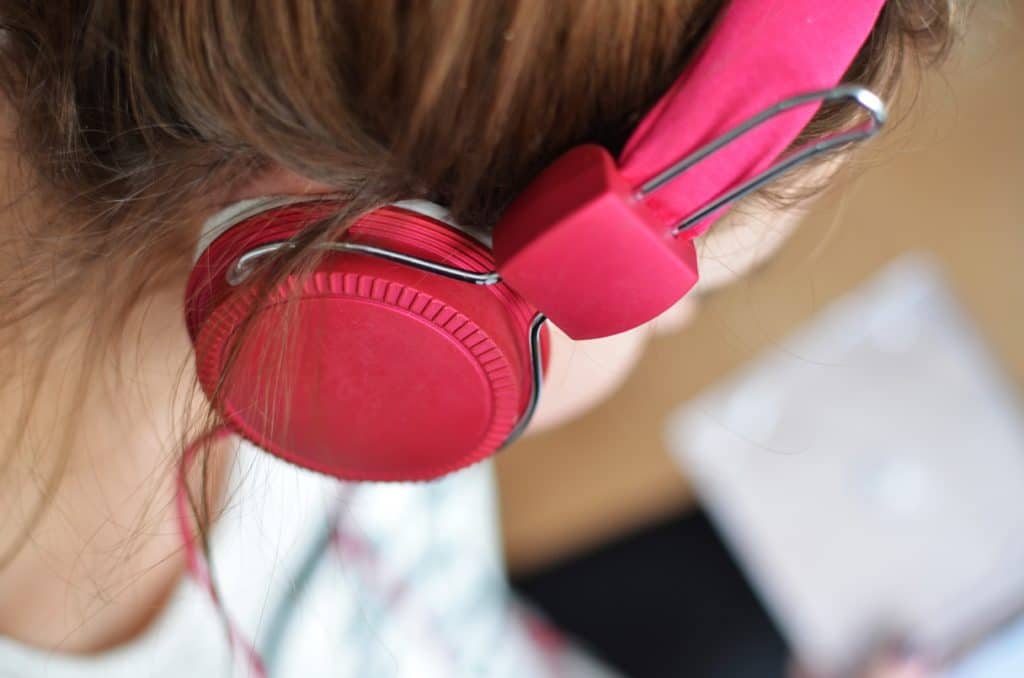
For neuroplasticity to be improved, a stroke or brain injury survivor needs to participate in new experiences. This helps the learning process, whether someone is assisting the individual or not. Neural circuits degrade over time if not used. Lack of use leads to a loss of function, adaptation, and nonuse. Remember the saying, "Use it, or lose it?" This is an excellent example of how easy it is to lose one’s ability if you don’t use it.
Mental Practice in Sports, Music and Performing Arts
Before swimming a race, legend Michael Phelps gets into the pool and rehearses a pre-race ritual that includes a form of MP and deep breathing. Outfitted in his parka, and listening to headphones, the 28-time Olympic medalist can almost always be found alone mentally practicing his strokes before he even enters the water. Why would he do this? Decades of research shows that imagining step-by-step physical actions enhances one’s abilities and is beneficial when included with physical practice (Schuster et al., 2011). However, very few of us are athletes. Does this mean regular people can’t use mental practice? No. The use of MP, relaxation, and imagery techniques are not limited to athletes alone. Performers, musicians, and public speakers often use MP to focus, rehearse, and gain confidence before performing. There is also research that shows that surgeons use MP to train for difficult surgeries, and astronauts use MP to adjust to being in outer space. Plus, there is excellent news about mental practice: What works for athletes and other healthy adults also works for someone that has had an injury to their brain and nervous system.
Benefits of Mental Practice
Mental practice deserves a top spot on the list of treatment approaches used in therapy. Research supports that MP reduces impairments and improves functional recovery when used in poststroke rehabilitation. It is especially useful when added to physical practice for upper-limb recovery. The following are a few benefits of mental practice, relaxation, and imagery techniques. Benefits:
- Improves the motor function of the affected limb
- Enhances motor planning in the brain
- Increases the amount a person uses an affected limb
- Builds a larger "mind map" for many different areas of the brain
- Promotes relaxation and a meditative state of mind which are proven to help one’s health and wellbeing
Practical Benefits:
- Keep the brain working hard while taking a physical break
- Requires minimal setup and equipment
- Easy to perform without supervision
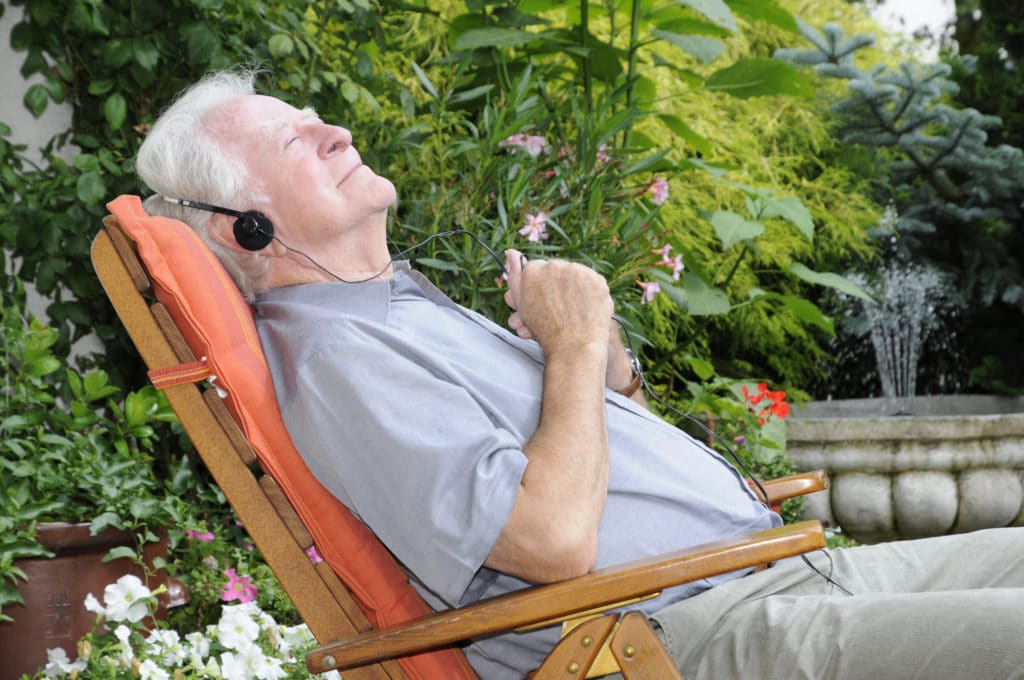
Mental Practice: Make it a Top Priority
Not all people find it easy to imagine themselves doing a task, but the power of a focused mind should not be underestimated. Rehabilitation experts strongly recommend mental practice as an adjunct to intense skilled therapy. Interestingly, MP is not commonly used amongst neurorehabilitation therapists, though it has been shown to produce great results and increased brain mapping. The combination of encouragement and MP intervention can profoundly shape the recovery for an individual. Don’t delay. Start using it now!
Introducing the SaeboMind Mental Practice Exercises
Saebo, Inc. is pleased to offer SaeboMind Mental Practice Exercises, a collection of audio files designed explicitly for neurological recovery. These recordings are offered at no cost to the public because of Saebo’s continued commitment to providing compassionate, evidence-based care for the individuals of the world. Access to the SaeboMind audio files is unlimited, with no purchase necessary. It is considered a viable intervention for motor rehabilitation because it is safe, cost-effective, and provides multiple, endless practice opportunities (Kho et al., 2014).
No Patient Left Behind
Engaging in SaeboMind Mental Practice Exercises is recommended for everyone that can actively listen and follow basic instructions. It is ideal to use between physical tasks or exercise. SaeboMind exercises can be used in a variety of settings requiring just the internet and a personal communication device. Consider the following suggestions for when and where to perform SaeboMind Exercises:
- Subacute recovery – The early weeks after injury: Once medically stable, start mental practice immediately. Whether in subacute or inpatient rehabilitation, performing MP uses mental energy, allowing one’s body to rest. Since mental practice is simple to set up, it can easily be performed between therapy sessions or visits from family or hospital staff. SaeboMind also offers users increased independence. This is the opposite of most physical activities during this time, which require someone else to be present for assistance. Once initial directions and set up are provided, a therapist just needs to monitor progress occasionally.
- Chronic recovery – Months to years after injury: Mental practice can be utilized in various rehabilitation settings (outpatient, home health, skilled nursing, community programs). It can be used without following a formal therapy program and is easily inserted into a daily routine. SaeboMind is best used during times when the brain is alert and attentive. The SaeboMind audio files can also be used to de-escalate agitated behaviors, lighten poor moods, and increase focus in users with attention and language deficits. SaeboMind Mental Practice Exercises can provide benefits well beyond motor recovery.
What to Expect from a SaeboMind Mental Practice Exercise Session
Mental practice is most often presented by listening to audio recordings that capture what it looks like and feels like to perform an activity. The listener follows along by imagining their body performing a task in a relaxed and self-reflective state of mind. This can be performed on the go or at home.
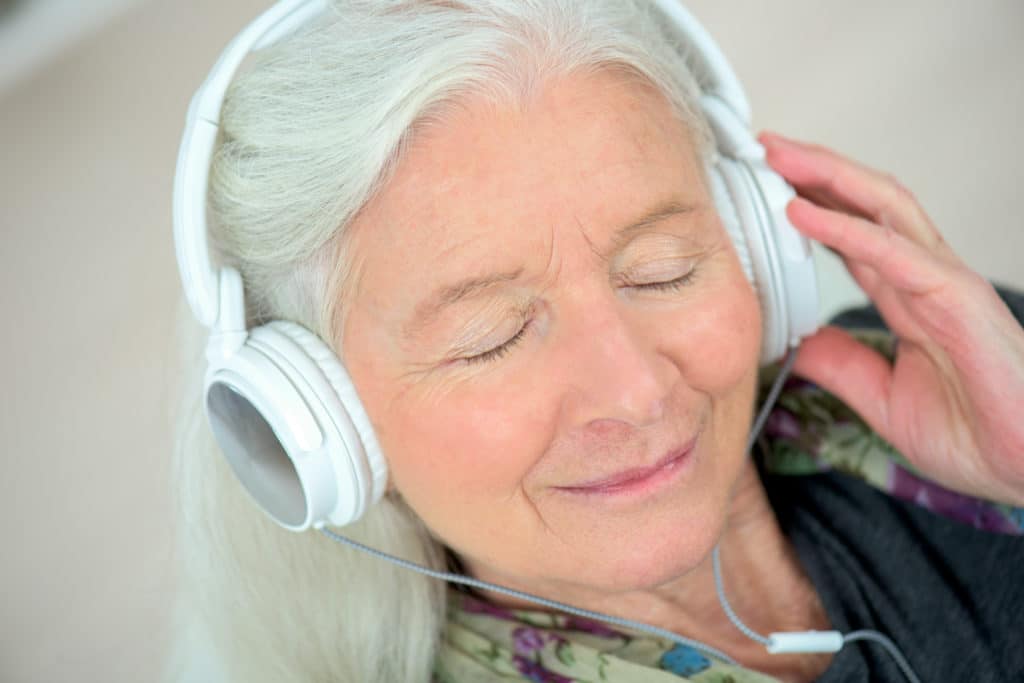
The SaeboMind catalog offers many familiar activities to choose from. Examples of a few upper extremity activities include handwriting, eating food, petting your animal and counting money. A few examples of lower extremity activities include walking, balancing, standing up and using stairs safely.
There are three phases in each SaeboMind audio session:
- Phase 1: Introduction to Meditation. Promotes relaxation and enables the listener to forget their immediate surroundings by closing their eyes and focusing on only themselves. This phase guides an individual through deep breathing exercises for peace and calming. Leads the listener through progressive muscle relaxation (PMR), a technique to help encourage control and awareness of individual muscle groups.
- Phase 2: Mental Practice. Has the listener participate in vibrant and rich descriptions of each functional activity. This allows the listener to really focus on the affected arm or leg as if they were performing the task without any difficulty.
- Phase 3: Closing Meditation. Guides the individual back into awareness of their real environment through a reversal of PMR and deep breathing techniques.
The total practice time for one audio file lasts 20-30 minutes total.

The Four Pillars of SaeboMind
Using mental practice for rehabilitation is best done when the user understands the process. The Four Pillars of SaeboMind serve as a foundation of fundamental principles of motor learning through neuroplasticity. The following four "pillars" affirm the 3 phases of the SaeboMind Mental Practice Exercises:
- Belief of Mind-Body Integration. To be successful with SaeboMind, an individual must believe MP is effective. Appreciating the strong connection between the body and the mind will help strengthen one’s progress when using MP. Not believing will not deliver results.
- Meditative State of Mind. Studies show that people who meditate regularly have lower stress and anxiety levels, better memory and attention, better emotional regulation, and wake feeling more rested than people who do not meditate. There are also other associated benefits like less pain and some improvement in physical health-related conditions. SaeboMind encourages listeners to safely enter a state of relaxation with the use of deep breathing and PMR techniques. This will help repair balance and harmony in the brain following an unexpected, life-altering neurological injury.
- Anticipation of Positive Outcomes. Hope and encouragement yield a positive, "glass half full" approach to recovery. SaeboMind Mental Practice Exercise sessions end with the successful execution of a goal-oriented, purposeful task. The task highlighted in the audio file should be meaningful to the listener. Research shows that participating in meaningful activities has a positive influence on neuroplasticity when compared to participation in nonmeaningful activities.
- Self-Reflection of Performance. Reflecting on one’s actions promotes mental and physical growth. To support the motor-learning process, SaeboMind Mental Practice Exercises regularly cues the listener to spend time on self-reflection and what the individual experiences during the mental practice.
How to Mentally Practice "on the spot."
If time is limited, and you can’t use the SaeboMind recordings, it is still possible to engage in a brief MP session. First, an individual needs to choose a task to mentally practice. Then, the individual can imagine their own play-by-play recording, including the required motor sequences and sensory experiences of performing that task. A lot of people find it easier to use memory to develop this type of MP. Having experience with the SaeboMind recordings will help in the creation of an inner dialogue. Self-guided talk of "seeing and feeling" the limb move through an action strengthens neural connections to critical areas of the brain. Regular use of this technique teaches individuals patience before performing any action. Calmly moving your limb helps an individual practice correct movements and aids in motor planning and execution. This technique becomes easier the more mental practice is performed.
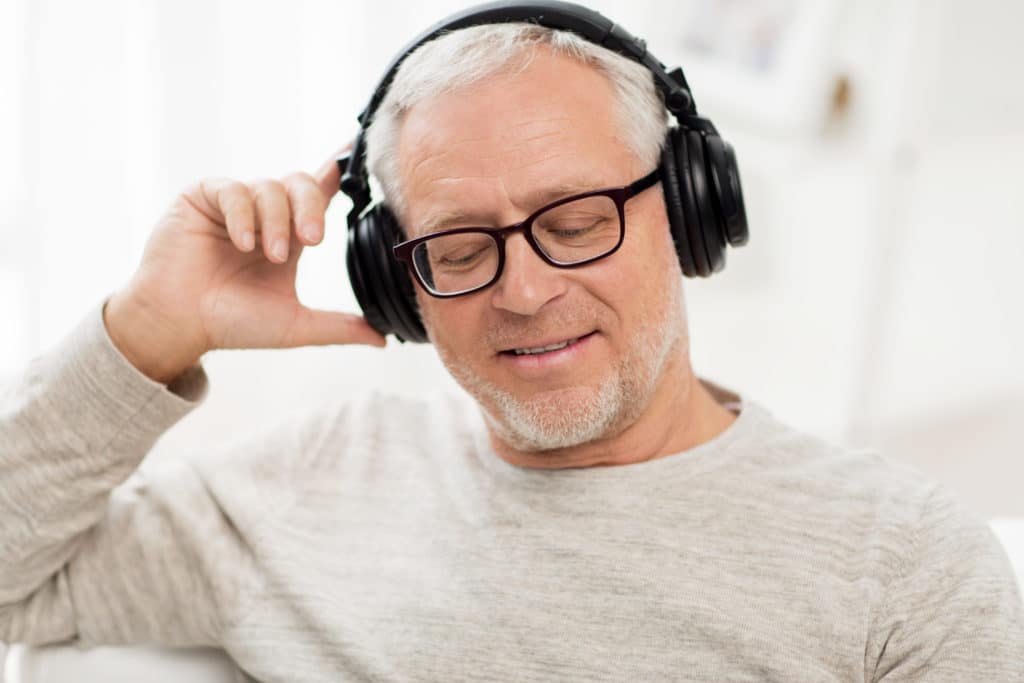
Saebo wants to hear from you!
The Saebo support team and expert clinicians care about the progress you are making with your mental practice. Let us know how SaeboMind Mental Practice Exercises have influenced and accelerated your recovery efforts. Tell us your story by sharing a testimonial on our website or contact your Saebo representative at (888) 284-5433. If you want to see YOUR favorite activity made into a SaeboMind Exercise, let us know. Together, we can develop a comprehensive library of meaningful daily activities to meet everyone’s needs. Now that SaeboMind offers mental practice in a convenient playlist to take your rehabilitation to the next level, there is No Plateau in Sight! A special thank you to our SaeboMind Mental Practice Exercise consultants, Emily J. Morgan, MS, OTRL, CSRS, CBIS, RPSFC in NDT and Stephen Page, PhD, OTR/L, Neurorecovery Unlimited, LLC.
References Bajaj, S., Butler, A.J., Drake, D., & Dhamala, M. (2015). Brain effective connectivity during motor-imagery and execution following stroke and rehabilitation. Neuroimage, 8, 572-582. Barclay-Goddard, R.E., Stevenson, T.J., Pouluha, W., & Thalman, L. (2011). Mental practice for treating upper extremity deficits in individuals with hemiparesis after stroke. Cochrane Database Syst. Rev, 5, Cd005950. Bovend’Eerdt, T.J., Dawes, H., Sackley, C., Izadi, H., & Wade, D.T. (2010). An integrated motor imagery program to improve functional task performance in neurorehabilitation: a single-blind randomized control trial. Arch Phys Med Rehab., 91, 939-946. Brandmeyer, T., Delorme, A., & Wahbeh, H. (2019). The neuroscience of meditation: classification, phenomenology, correlates, and mechanisms. Prog Brain Res., 244, 1-29. Decety, J. (1996). Do imagined and executed actions share the same neural substrate? Brain Res Cogn Brain Res., 22, 305-310. Dusky, A., Dickstein, R., Ariav, C., Deutsch, J., & Marcovitz, E. (2006). Motor imagery practice in gait rehabilitation of chronic post-stroke hemiparesis: four case studies. Int J Rehabil Res., 29, 351-356. Hee, K., Yoo, E.Y., Jung, M.Y., Kim, J., Park, J.H., & Kang, D.H. (2018). Disability and Rehabilitation, 40(20), 2449-2457. Hewett, T.E., Ford, K.R., Levine, P., & Page, S.J. (2007). Reaching kinematics to measure motor changes after mental practice in stroke. Top Stroke Rehabil., 14, 23-29. Hilton, L., Hempel, S., Ewing, B.A., Apaydin, E., Xenakis, L., Newberry, S., . . . Maglione, M.A. (2017). Mindfulness meditation for chronic pain: Systematic review and meta-analysis. Ann Behav Med., 51(2), 199-213. Kho, A.Y., Liu, K.P., & Chung, R.C. (2014). Meta-analysis on the effect of mental imagery on motor recovery of the hemiplegic upper extremity function. Aust Occup Ther J., 61(2), 38-48. Last, N., Tufts, E., & Auger, L.E. (2017). The effects of meditation on grey matter atrophy and neurodegeneration: A systematic review. J Alzheimers Dis., 56(1), 275-286. Nilsen, D., Gillen, G., & Gordon, A. (2010). Use of mental practice to improve upper-limb recovery after stroke: A systematic review. Am J Occup Ther., 64, 695-708. Page, S.J. (2000). Imagery improves motor function in chronic stroke patients with hemiplegia: A pilot study. Occup Ther J Res., 20, 200-215. Page, S.J., Peters H. (2014). Mental practice: Applying motor practice and neuroplasticity principles to increase upper extremity function. Stroke, 45(11), 3454-3460. Page, S.J., Levine P., Sisto S.A., & Johnson M.V. (2001). Mental practice combined with physical practice for upper-limb motor deficit in subacute stroke. Phys. Ther., 81, 1455-1462. Page, S.J., Hade E., & Pang J. (2016). Retention of the spacing effect with mental practice in hemiparetic stroke. Experimental Brain Research, 234(10), 2841-2847. Page, S.J., Levine P., & Leonard A. (2007). Mental practice in chronic stroke: Results of a randomized, placebo controlled trial. Stroke, 38(4), 1293-1297. Paulson, S., Davidson, R., Jha, A., & Kabat-Zinn, J. (2013). Becoming conscious: The science of mindfulness. Ann NY Acad Sci., 1303, 87-104. Schuster, C., Hilfiker, R., Amft, O., Scheidhauer, A., Andrews, B., Butler, J., . . . Ettlin, T.(2011). Best practice for motor imagery: A systematic literature review on motor imagery training elements in five different disciplines. BMC Med., 9, 75. Teasell, R., & Hussein, N. (2016). Stroke rehabilitation clinician handbook. Retrieved from http://www.ebrsr.com/clinician-handbook
All content provided on this blog is for informational purposes only and is not intended to be a substitute for professional medical advice, diagnosis, or treatment. Always seek the advice of your physician or other qualified health providers with any questions you may have regarding a medical condition. If you think you may have a medical emergency, call your doctor or 911 immediately. Reliance on any information provided by the Saebo website is solely at your own risk.




